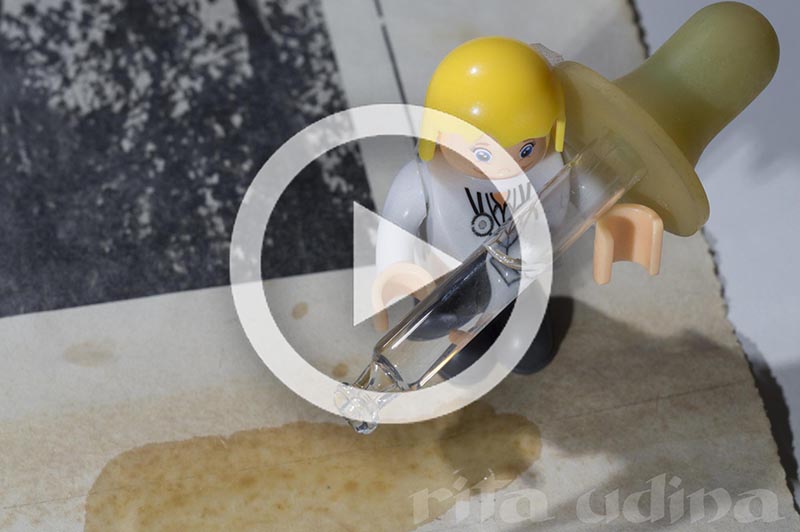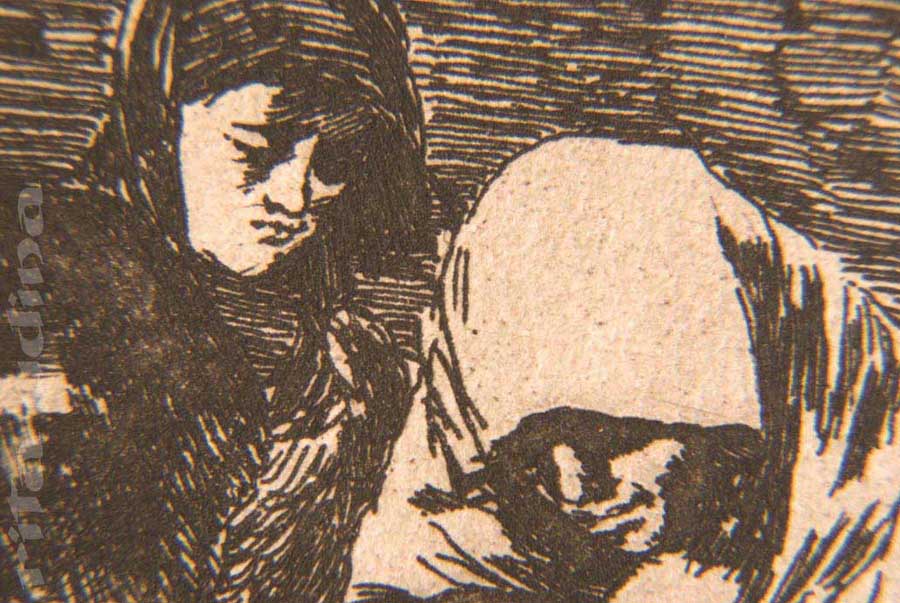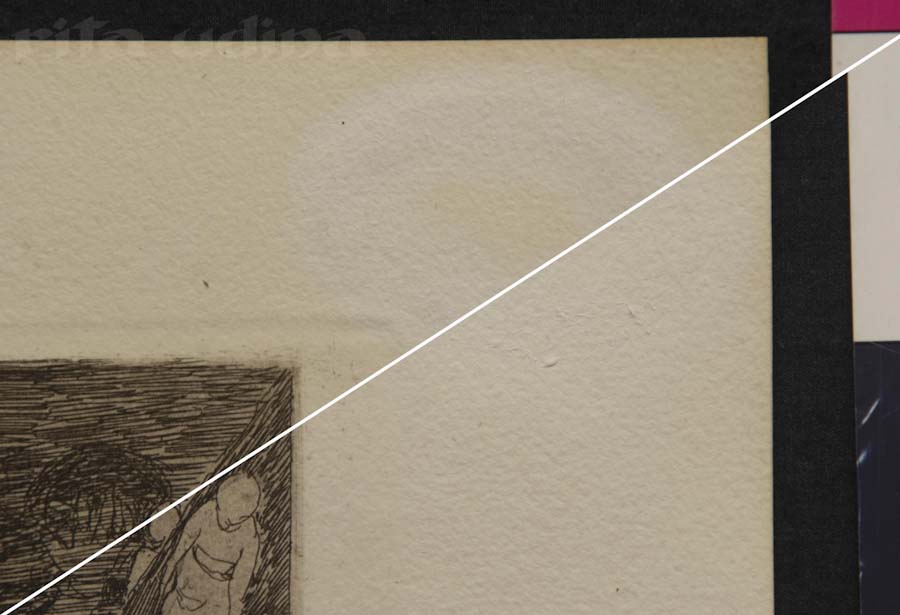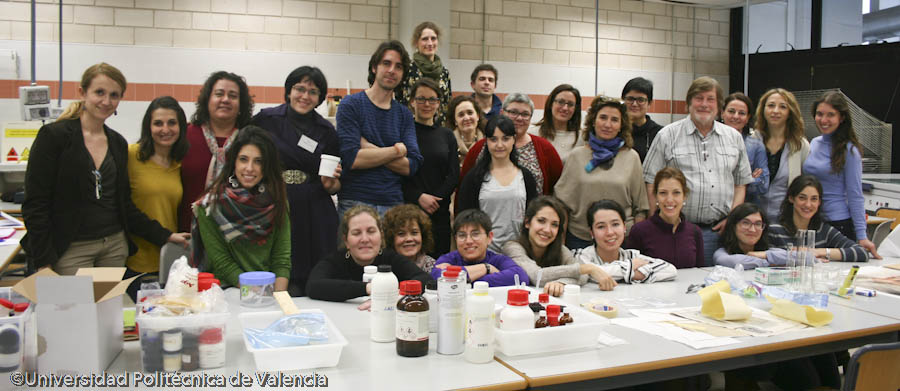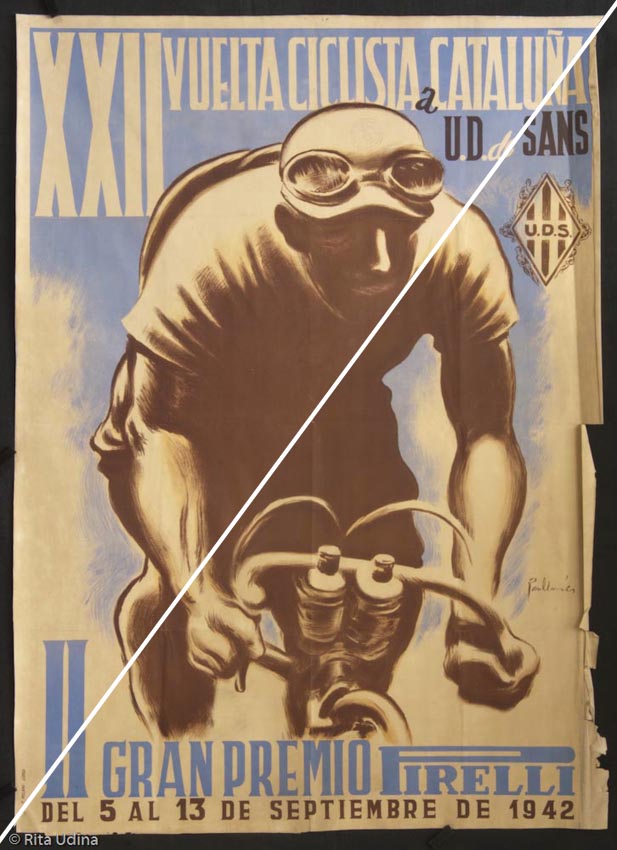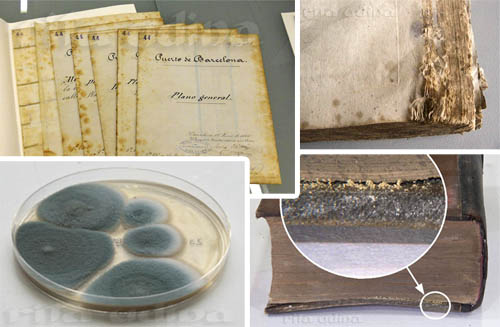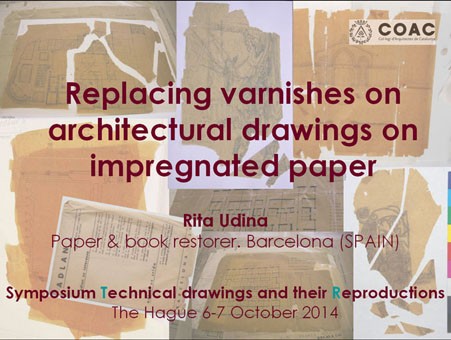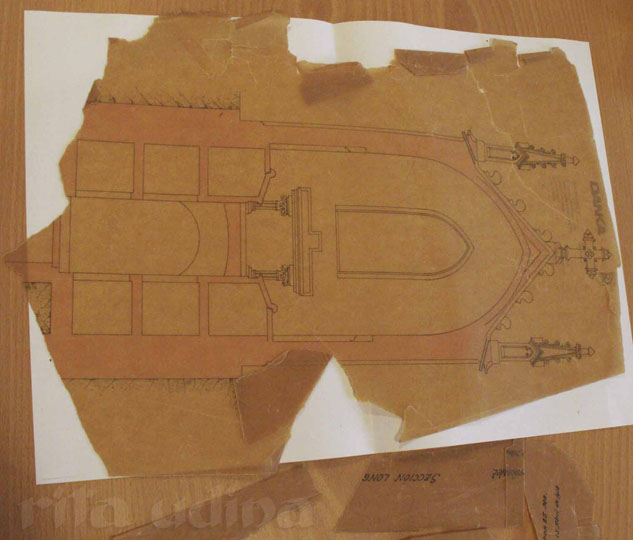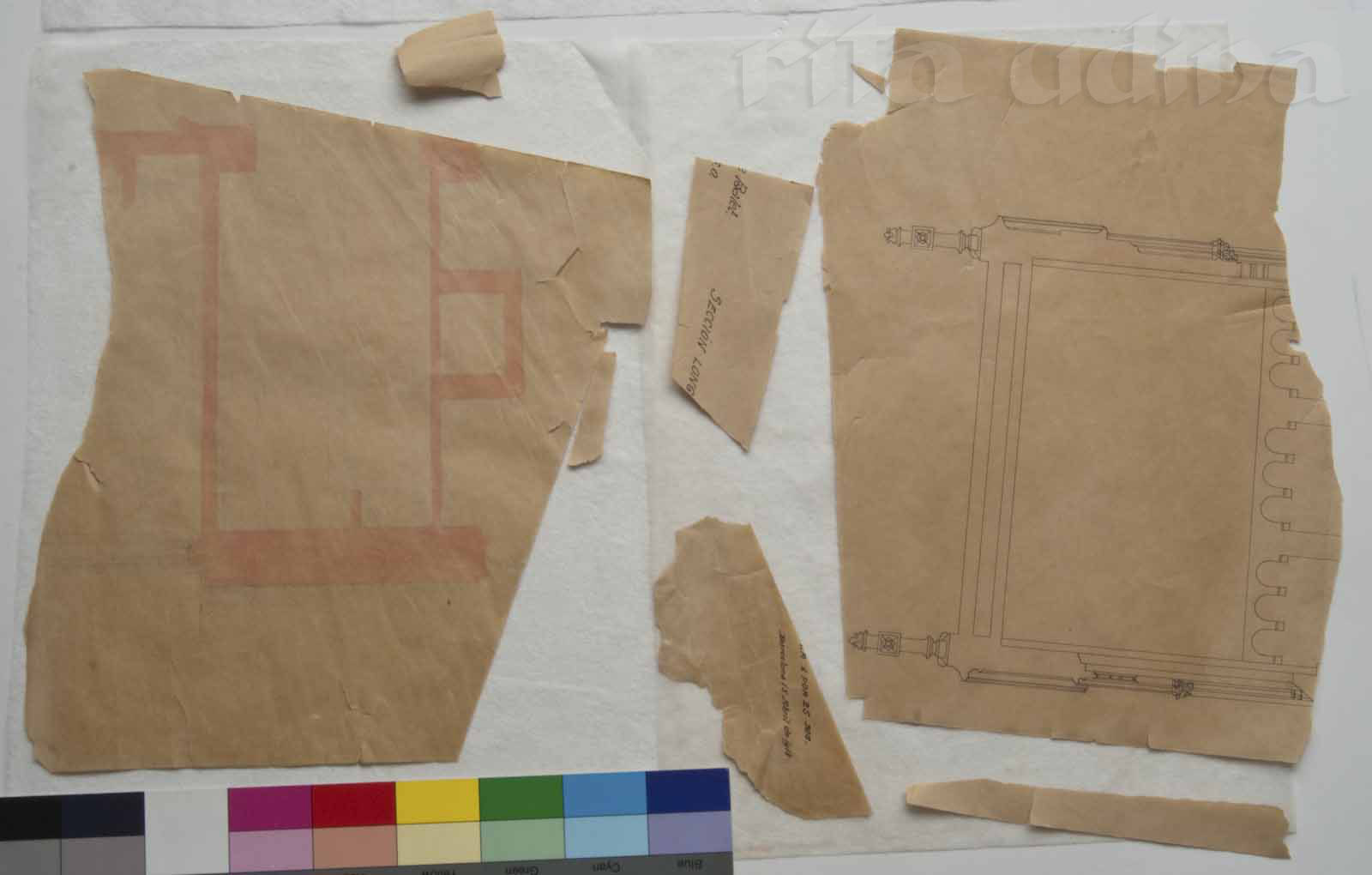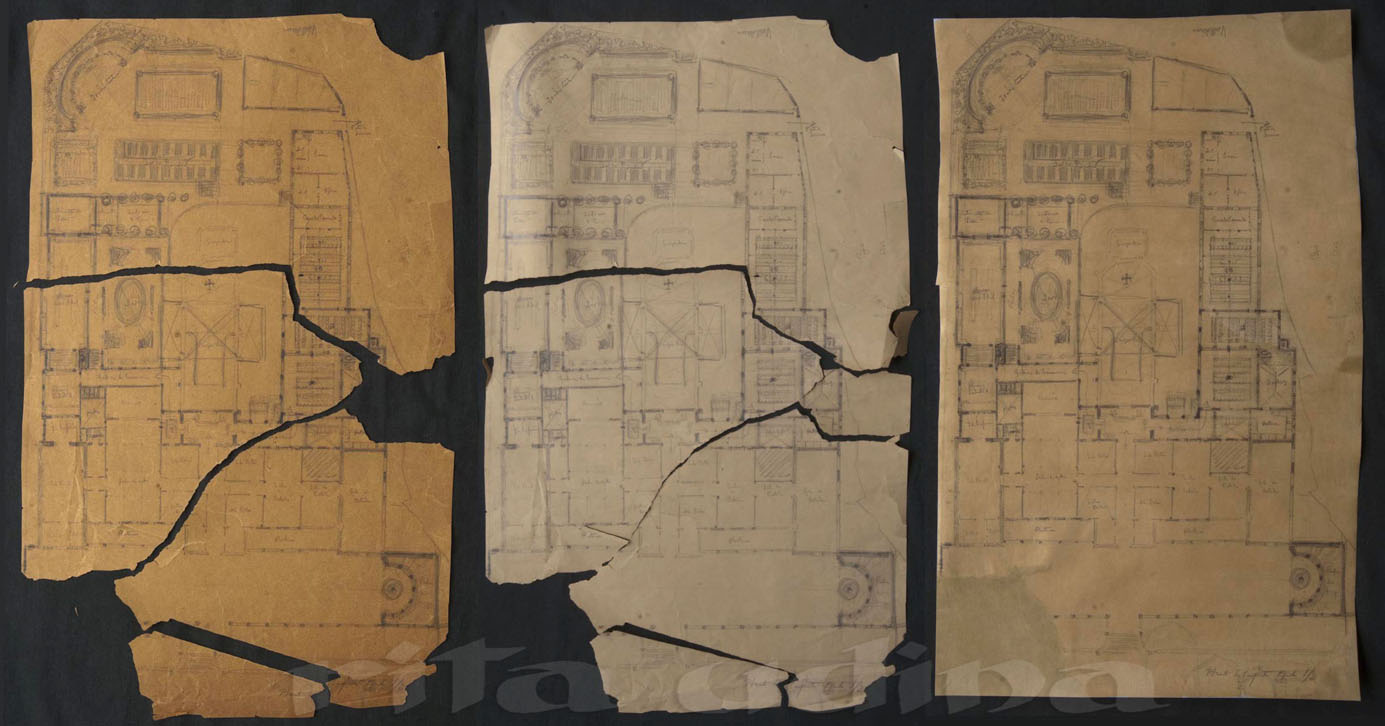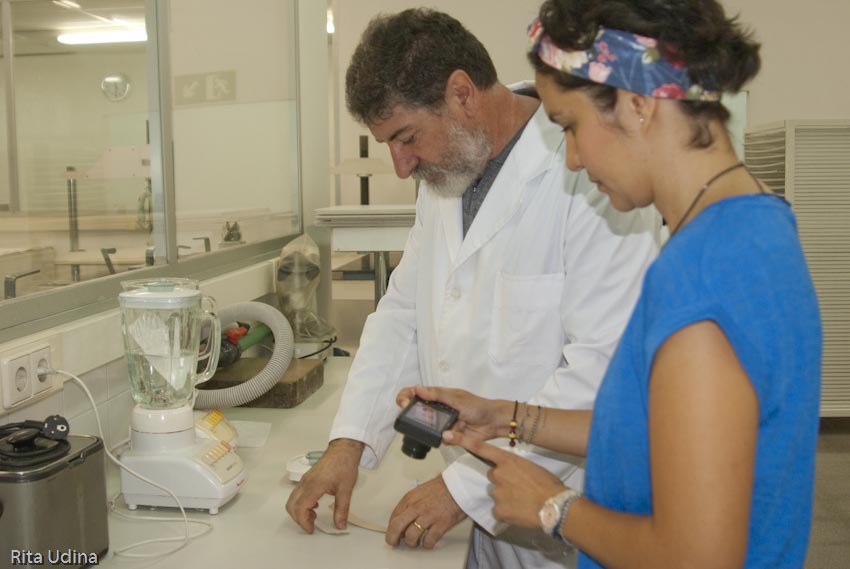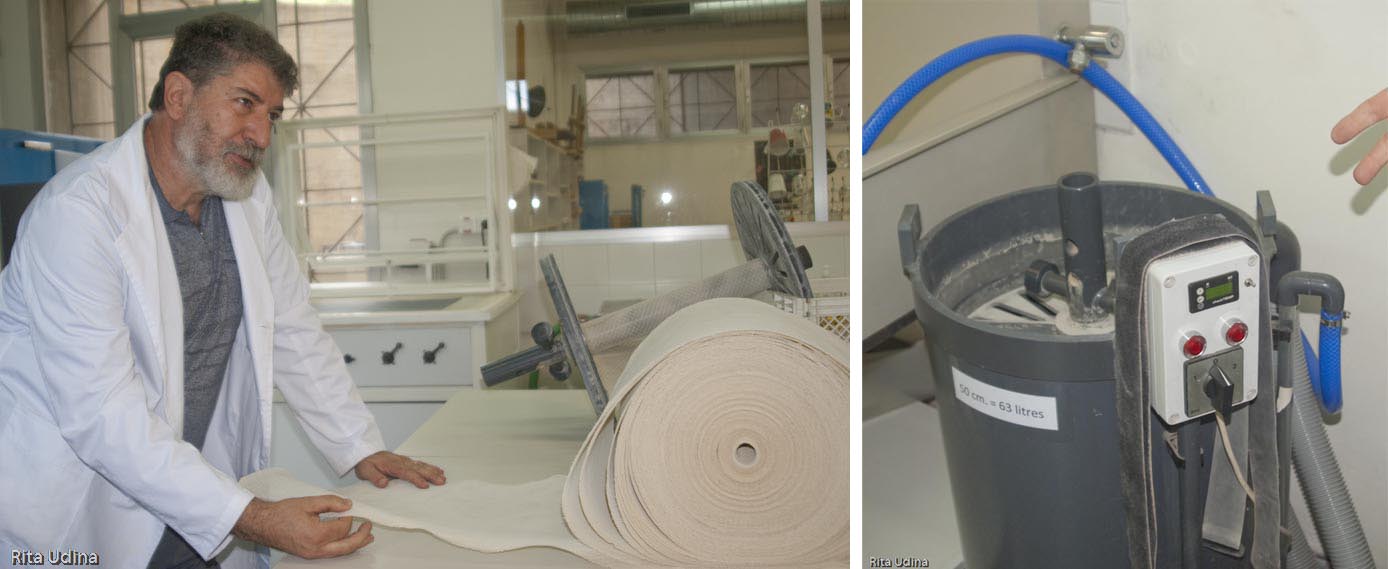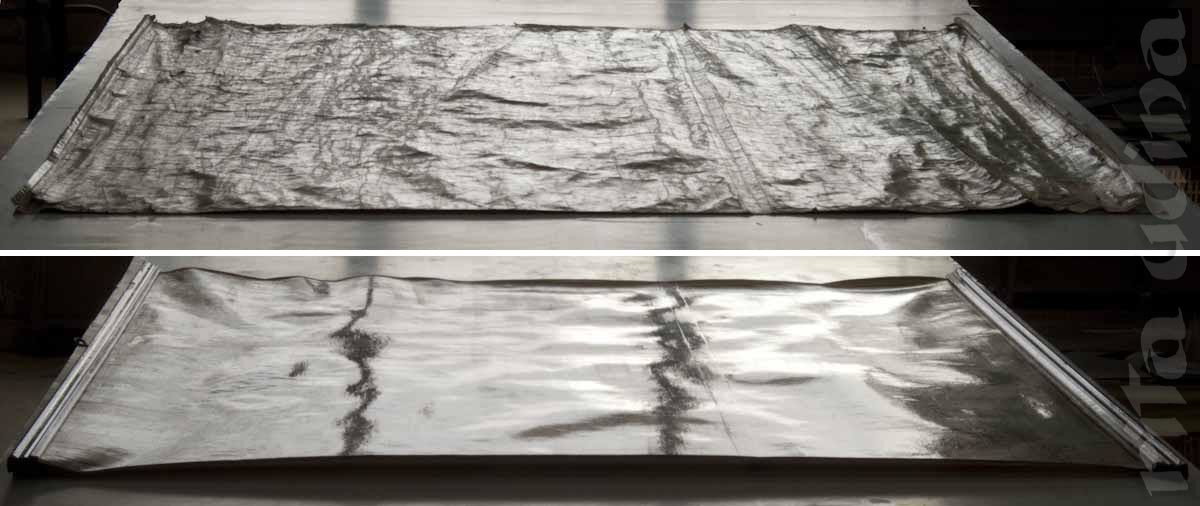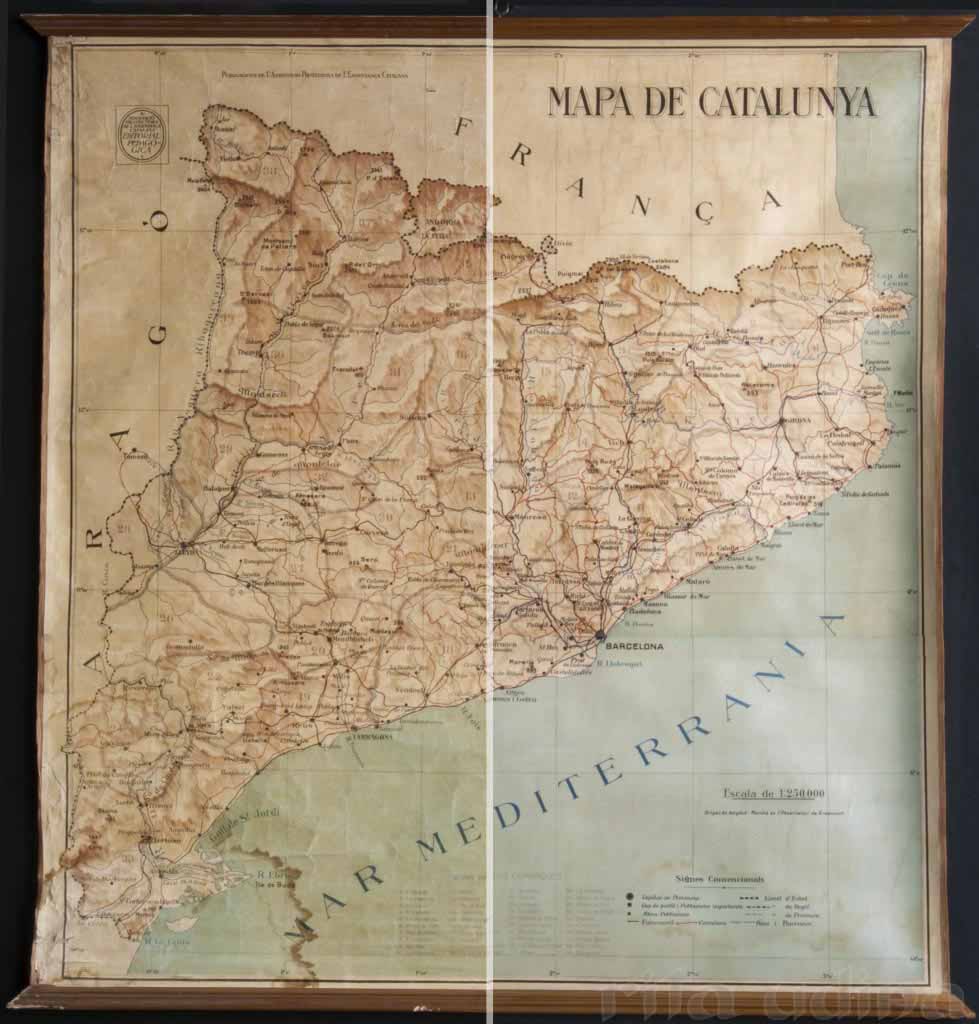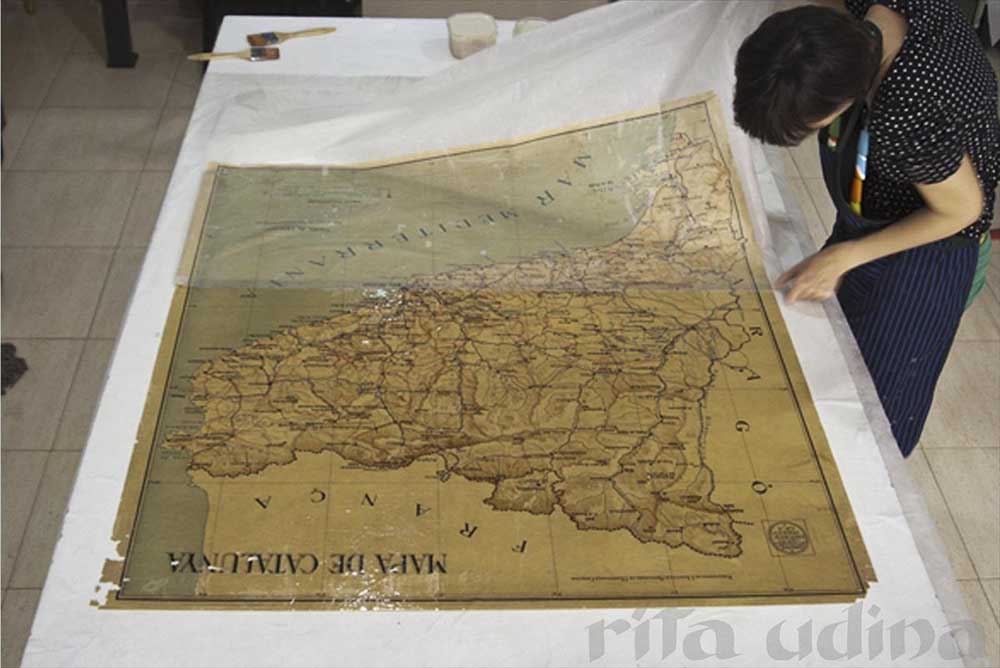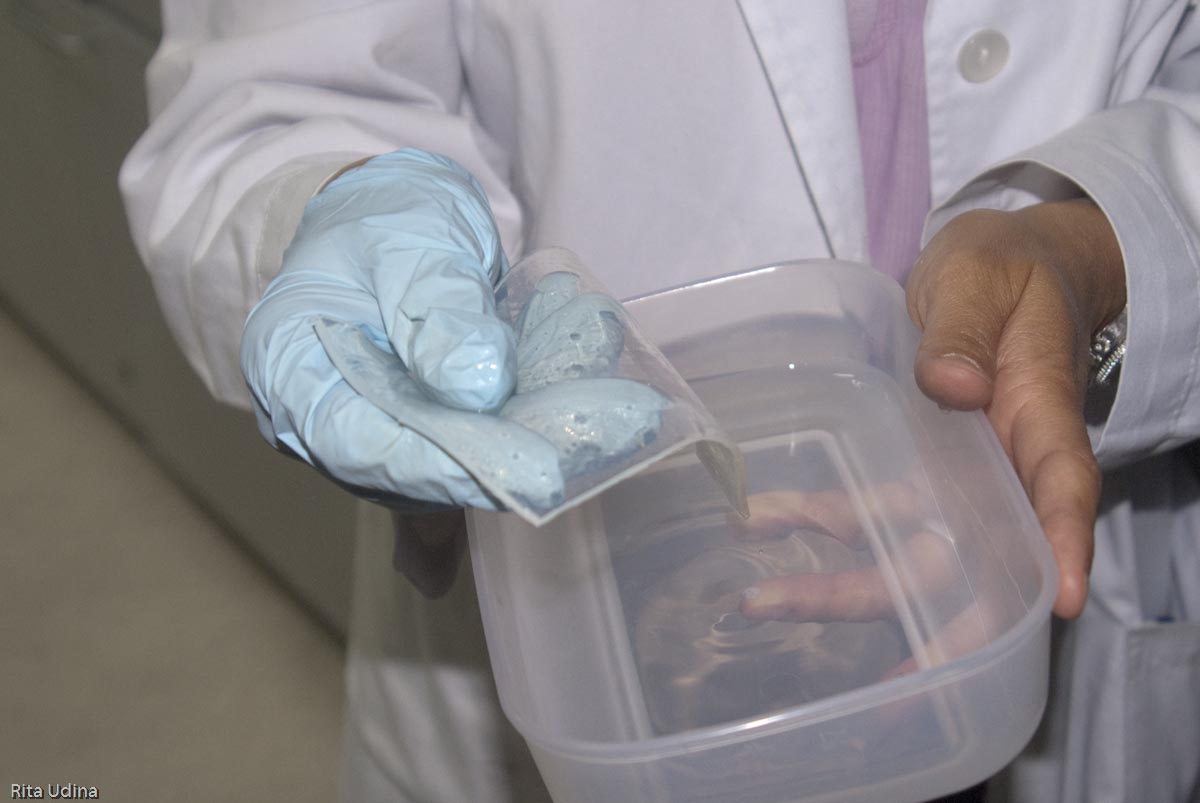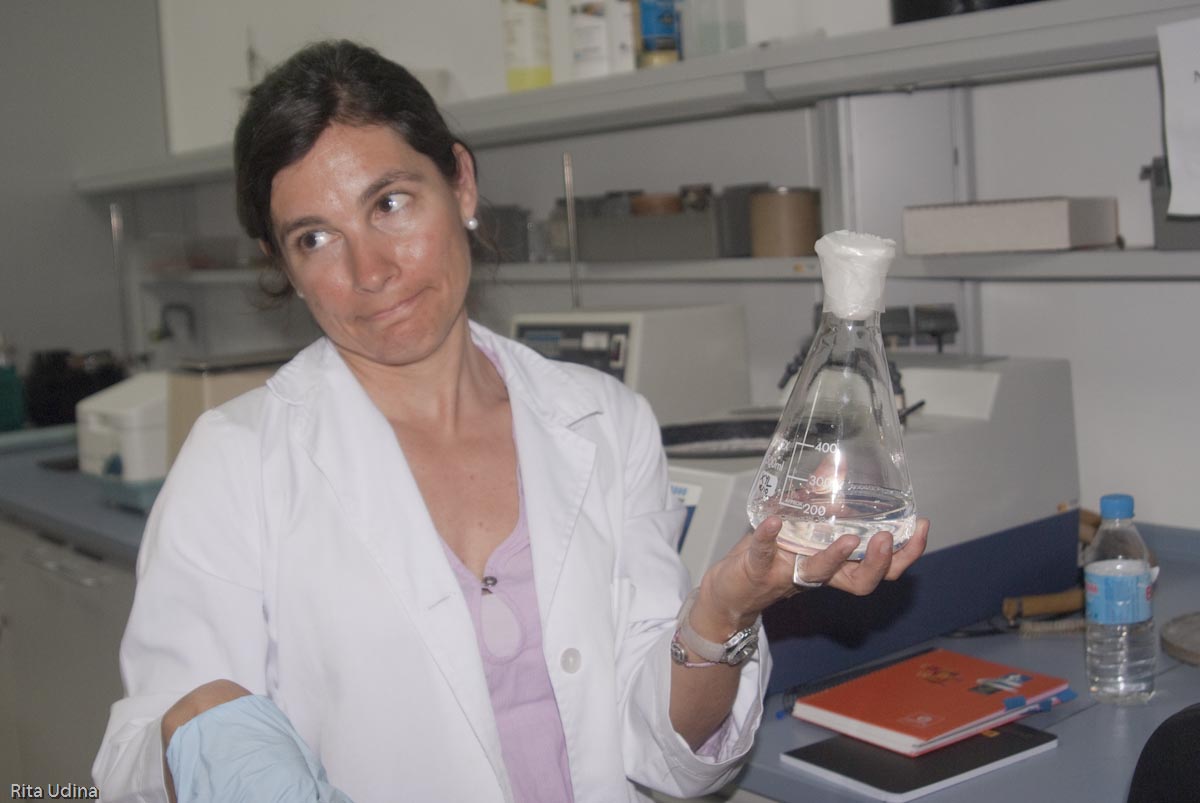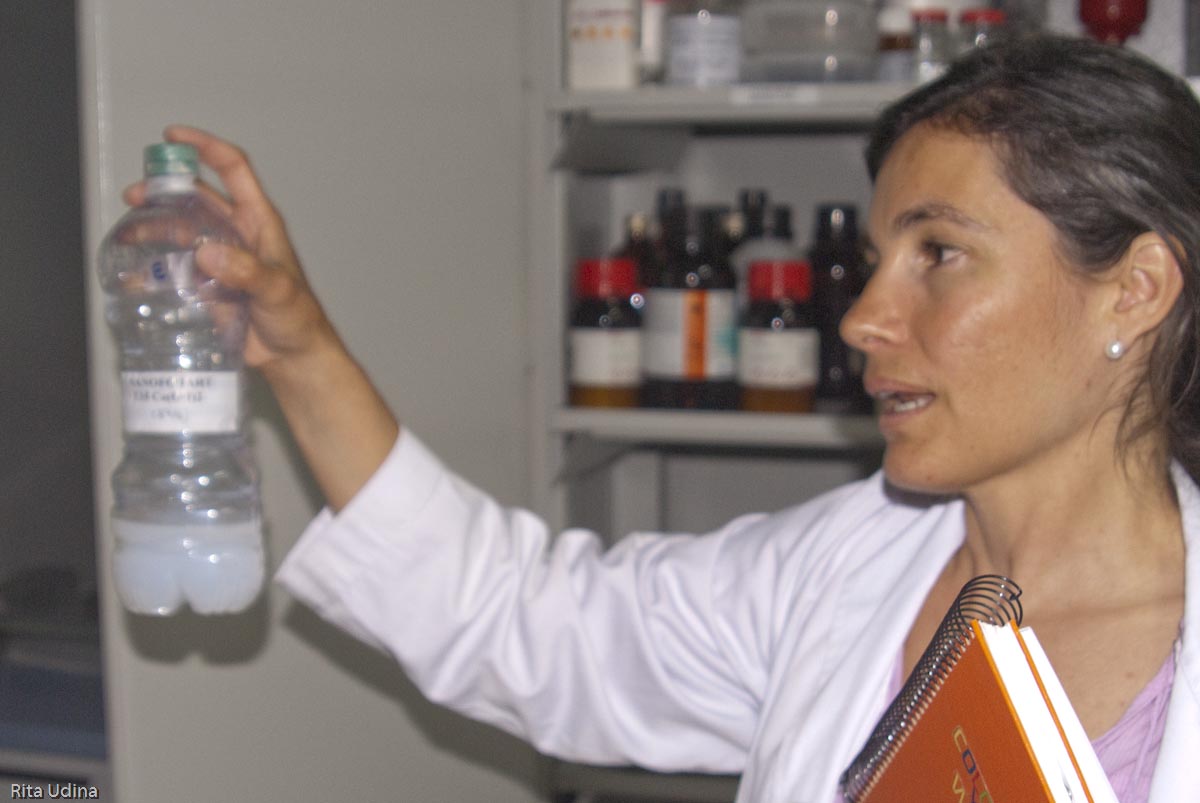desacidificació
A continuació les entrades de blog relacionades amb desacidificació:
Somni d’una nit de confinament, restaurant documents
Això del confinament és com parar tota activitat, i això he fet: un stop-motion sobre restauració de paper. El vídeo mostra el procés complet de restauració d'un document.
Eliminació del mirall de plata en fotografies (vídeo)
Per fi! un tractament definitiu, segur i eficient per a treure el mirall de plata en les fotografies històriques, i que canviarà la manera com aquest problema tan generalitzat en els arxius fotogràfics s'ha abordat amb més o menys fortuna. Vegeu el vídeo per comprovar-ne els resultats.
El mirall de plata en les fotografies: nou procediment d’eliminació
“El mirall de plata en les fotografies: importància, mecanisme d’aparició i nou procediment d’eliminació”, de Jordi Mestre, Josep Mª Vergés i una servidora. Ben aviat publicarem un vídeo perquè vegeu lo fàcil i revolucionari d'aquest nou mètode!
Restauració dels “Estralls de la guerra” de Goya
Hi ha feines... i feines; i quan el Sr. Goya pica a la porta, al taller li posem l'alfombra vermella: passi, passi! Primera edició, de 1863 (portada). La sèrie de gravats dels estralls de la guerra de Francisco Goya va arribar al taller tota sencera, amb els seus 80 aiguaforts, corresponents a la primeríssima edició
Restauració “a la carta” amb Richard Wolbers
Col·legues de penes i alegries, restauradors, heus ací perque estic tan emocionada amb el curs de Richard Wolbers sobre neteja, banys i eliminació de taques en paper de la UPV: Es tracta de fer de cada restauració una espècie de vestit a mida per al nostre objecte, amb una mínima intervenció. Ens parla de gels, dissolvents, tensioactius, pH i conductivitat. Ni en els meus deliris més alienats m'hauria imaginat que la química em resultaria tan pròxima, senzilla i útil. Moltes gràcies Richard, t'ho devem a tu.
El químic i el restaurador: una relació amor/odi
Una experiència catàrtica, així podríem descriure el què suposa per a un restaurador assistir a un curs de química. Hi anem amb un cert respecte, (per no dir basarda) i l'anhel de que ens descobreixin un reactiu miraculós que canviï la nostra vida. El pobre restaurador amb prou feines podrà tenir una discussió tu a tu amb un químic, ja sigui sobre les reaccions que s'esdevenen durant la restauració, o el mateix envelliment de l'obra; i no obstant cal que el qüestioni, que mantingui viu aquest diàleg. Però gràcies a Richard Wolbers, crec haver fet les paus amb la química de la restauració i els seus científics.
Els ciclistes de Sants ja no estan de pega
Els ciclistes de Sants van arribar al taller garranyigant, més que no pas pedalant! Estrips, fòxing, enfosquiment, fragilitat, acidesa... Tots aquests danys han estat curosament tractats perque puguin fer meta esplendorosos a l'arxiu de Sants-Montjuïc, on estan exposats. Perquè, qui diu que en apropar-se a la vuitantena no es pot fer goig o anar en bicicleta? Fixeu-vos sinó amb en Ricardo, el ciclista... qui l'ha vist, i qui el veu: dóna una catalana volta, i les que faci falta, a cartells molt més joves!
Tinc fongs! (…o tinc fòxing?)
El fòxing són fongs... o no? Una de les majors preocupacions en arxius i biblioteques és la presència de fongs. I amb raó: es desenvolupen sense estridències, i quan els detectem hi pot haver hagut pèrdua irreversible d'informació. Abans de començar a estirar-nos dels cabells, cal identificar si els símptomes delaten efectivament la presència de fongs, o bé es tracta de fòxing.
Nova metodologia de restauració per retornar la flexibilitat al paper vegetal
Nova metodologia per retornar la flexibilitat perduda a papers vegetals impregnat amb fragilitat severa. Els papers vegetals -tan utilitzats en dibuixos tècnics- tenen en comú que són transparents, però hi ha diferències significatives en el seu procés d'elaboració. Les seves propietats i comportament, seran doncs molt diversos. En el paper impregnat s'aplicava un oli o vernís per fer-lo transparent. Explicació la restauració de diversos dibuixos en els que el vernís fou retirat per a substituir-lo posteriorment, i de com això permet que el paper es pugui manipular de forma segura sense perdre per això les propietats visuals que el caracteritzen.
Màquina renta-llibres i nous mètodes de restauració d’enquadernacions en pell
Des de la màquina de rentar llibres a noves metodologies per a la restauració d'enquadernacions en pell, les visites al Domènec del taller de restauració de la Biblioteca de la Universitat de Barcelona, de són sempre un plaer!
- Restauració d’un cartell escolar del període de la guerra civil GaleriaConservation of lined and varnished poster
Restauraciónd e cartel entelado y barnizado" data-title="Restauració de cartell entelat i envernissat
Conservation of lined and varnished poster
Restauraciónd e cartel entelado y barnizado" data-caption="Restauració d’un cartell escolar del període de la guerra civil">
Restauració d’un cartell escolar del període de la guerra civil
Aquest mapa de Catalunya representa els típics cartells escolars: amb els seus llistons per penjar i enrotllar, i entelat pel revers. Els vernissaven amb goma laca per protegir-los de l'abrasió i fer-los més impermeables. Estava fet sobre dos papers impresos, encolats per una franja horitzontal central. És de 1936, tot just esclatava la guerra civil espanyola. Infinitat de microfissures erosionaven la superfície originalment llisa del paper imprès. La imatge de dalt, a llum rasant, mostra com l'eliminació del vernís original ha permès hidratar de nou el paper, retornant-li l'elasticitat.
Nanotecnologia i gels químics aplicats a la restauració de documents
Què són els gels químics i les nanopartícules? Els últims avenços tecnològics en restauració de patrimoni documental es basen en la nanotecnologia i els hidrogels químics. La secció de restauració de llibres i documents de l'IPCE (Institut del Patrimoni Cultural d'España) desenvolupa aquesta interessant investigació en el marc del projecte europeu "Nano fo Art".
Categories
DANYS
acidesa / oxidació
arrugues
bibliòfag
insectes
corc
lepisma
mamífers
rata
microorganismes
fongs
bibliòpata / grafòpata
celo (esparadrap, BluTack...)
desastre
inundació
estructural
fòxing
llacuna
mirall de plata
EINES, MÀQUINES
OBJECTE
cartell
dibuix
document
segell
segell lacrat
fons d'arxiu o biblioteca
fotografia
albúmina
daguerreotip
gelatino-argèntica
placa de vidre
llibre
capçada
enquadernació flexible
estructures dels llibres
lligall
llom articulat (o buit)
llom fix (o ple)
relligat
tanques
manuscrit
mapes, plànols, dibuixos tècnics
mapes
plànols
PRODUCTES
adhesius - fixatius - vernissos
adhesius naturals
cautxú (natural)
engrut (midó)
goma laca
adhesius sintètics
cautxú (sintètic)
Filmoplast®
Klucel ®
Paraloid® B72
Tylose® (MHC)
dissolvent
alcohol benzílic
carbonat de dietil
ciclometicona
dimetilsulfòxid (DMSO)
polietilenglicol (PEG )
gels
gel d'agarosa
gel de xantana
gel físic
gel quimic
hidro-gels
organo-gels
Velvesil Plus
nanopartícules
tensioactiu
SUPORT
fusta
metall
paper
paper couché
paper de draps
paper de pasta mecànica
paper Kraft
paper vegetal
paper ceba
paper impregnat
paper verjurat
washi - papers japonesos
pell
pergamí
plàstics
Acetat de cel·lulosa
polietilè terftalat (PET)
Polipropliè (PP)
tela
cotó
seda
vellut
vidre
TÈCNICA
aquarel·la
bolígraf
collage
foto-reproducció
diazotip
gouache, tremp
imprès
gravat
aiguafort
litografia
xilografia
llapis de grafit
retolador
segell de tampó
tinta
TEORIA conservació-restauració
TRACTAMENTS
aplanat
aplanat per tensió
blanqueig
blanqueig solar
conservació preventiva
clima (HR, temp.)
consolidació
aprestat
empeltat
entelat
fixat de tintes
laminació
reintegració (material)
polpa de paper
desacidificació
desinfecció
digitalització
enquadernació nova
ensobrat - encapsulat
camises de conservació
capsa
sobres quatre solapes
envernissat
neteja
neteja en sec
neteja humida
treure celos
treure taques
treure vernís
retoc (reintegració cromàtica)
retoc en tinta neutra
retoc mimètic (o il·lusionista)

